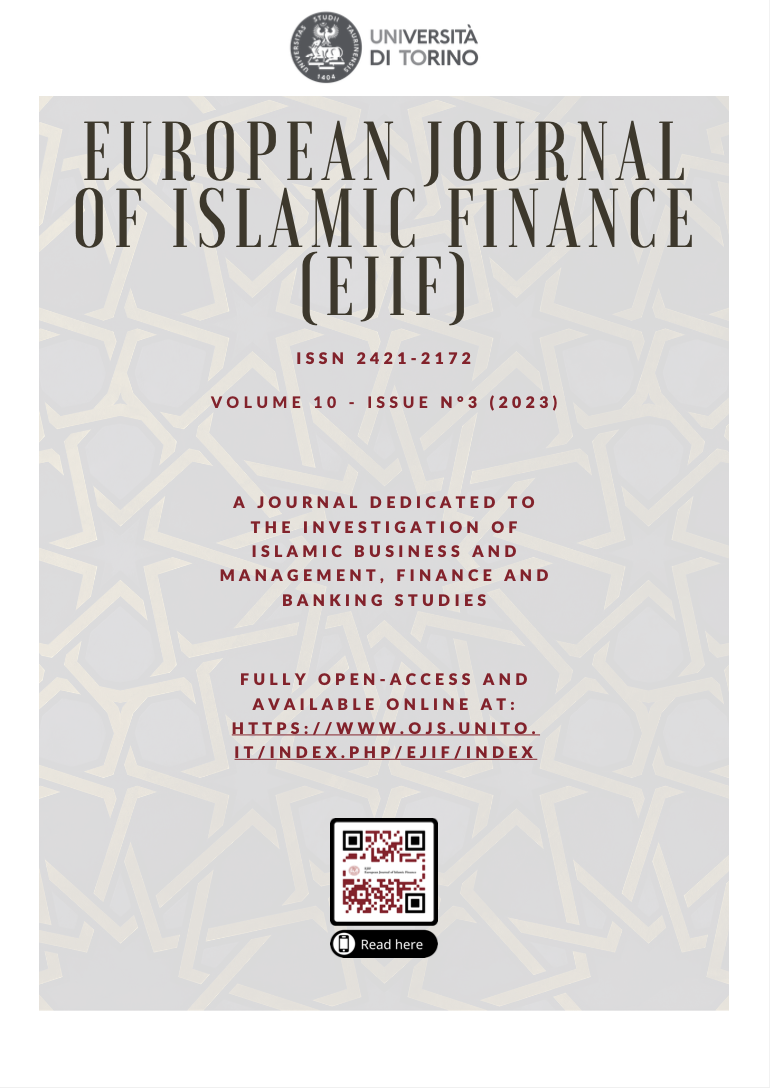Insolvency and bankruptcy based on Islamic principles within China – a data-driven analysis and framework
DOI:
https://doi.org/10.13135/2421-2172/7301Keywords:
Bankruptcy Law, Islamic Law, China, data-driven analysisAbstract
Islamic bankruptcy law and finance have taken on a growing role in modern economies, with several governments aiming to align the economic system with Islamic principles and solve some of the shortcomings of existing financial regulations related to bankruptcies. Within the last 40 years, China has become a major economy with significant development of its legal system. With the increasing growth and engagement with the Muslim world, challenges have arisen with speculative business practices and rising defaults. Furthermore, the growing engagement with Muslim countries has fostered a growing focus on providing Shariah-compliant legal frameworks to encourage trade and ensure the protection of corporations. Insolvencies and bankruptcies are natural in an economy. However, Islam emphasizes the importance of there being no distinction between balance sheet insolvency and cashflow insolvency, as well as the importance of personal responsibility for the debts incurred. The article has presented a solid outline of the Islamic and Chinese bankruptcy laws and how Islamic principles can be integrated into the Chinese legal system. The arising system in the form of either a separate legal system or one integrating these principles into the existing bankruptcy regulations can significantly strengthen debtor responsibility and recovery rates and encourage fairer business practices.
References
Arsenault, S. J. (2011). Leaping over the Great Wall: examining cross-border insolvency in China under the Chinese corporate bankruptcy law. Ind. Int'l & Comp. L. Rev., 21, 1.
Ata, H. M. (2019). Addressing financial bankruptcy from the Islamic perspective. Banks and Bank Systems, 14(3), 9-19.
Awad, A., & Michael, R. E. (2010). Iflas and chapter 11: Classical islamic law and modern bankruptcy. Int'l Law, 44, 975.
Devi, A., & Firmansyah, I. (2018). Solution to overcome the bankruptcy potential of islamic rural bank in Indonesia. Journal of Islamic Monetary Economics and Finance, 3, 25-44.
Goldberger, L. P., & Vague, R. (2021). A Guide to the Evergrande Debacle: Four Questions for Making Sense of What Lies Ahead. American Bankruptcy Institute Journal, 40(12), 14-60.
Graham, M. (2011). Islamic Finance and the United States Bankruptcy Courts: The Future of Sukuk Certificate Holders' Rights and the Importance of Considering Shari'ah Precepts in the Bankruptcy Process. Tul. J. Int'l & Comp. L., 20, 327.
Hermawan, S., Sari, Y. A., Biduri, S., Rahayu, D., & Rahayu, R. A. (2023). Corporate Social Responsibility, Firm Value, and Profitability: Evidence from Pharmaceutical Companies in Indonesia and Malaysia. International Journal of Professional Business Review, 8(2).
Islam, M. S., Semeen, H., & Farah, N. (2013). The effects of financial ratios on bankruptcy. Independent Business Review, 6(2), 52.
Ismal, R. (2012). Formulating withdrawal risk and bankruptcy risk in Islamic banking. International Journal of Islamic and Middle Eastern Finance and Management.
Jan, A. A., Tahir, M., Lai, F. W., Jan, A., Mehreen, M., & Hamad, S. (2019). Bankruptcy profile of the Islamic banking industry: evidence from Pakistan. Business Management and Strategy, 10(2), 265-284.
Jan, A., Marimuthu, M., bin Mohd, M. P., Isa, M., & Shad, M. K. (2019). Bankruptcy forecasting and economic sustainability profile of the market leading islamic banking countries. International Journal of Asian Business and Information Management (IJABIM), 10(2), 73-90.
Jan, A., Marimuthu, M., Shad, M. K., Zahid, M., & Jan, A. A. (2019). Bankruptcy profile of the Islamic and conventional banks in Malaysia: a post-crisis period analysis. Economic Change and Restructuring, 52(1), 67-87.
Jiang, Y. (2013). The curious case of inactive bankruptcy practice in China: a comparative study of US and Chinese bankruptcy law. Nw. J. Int'l L. & Bus., 34, 559.
Kilborn, J. J. (2011). Foundations of forgiveness in Islamic bankruptcy law: Sources, methodology, diversity. American Banking Law Journal, 85, 323.
Lin, S. (2018). The Empirical Studies of China's Enterprise Bankruptcy Law: Problems and Improvements. International Insolvency Review, 27(1), 77-109.
Mrockova, N. (2021). Corporate Bankruptcy Law in China: Principles, Limitations and Options for Reform. Bloomsbury Publishing.
Parry, R., & Long, Y. (2020). China’s enterprise bankruptcy law, building an infrastructure towards a market-based approach. Journal of Corporate Law Studies, 20(1), 157-178.
Rapisardi, J. J., & Zhao, B. (2010). A Legal Analysis and Practical Application of the PRC Enterprise Bankruptcy Law. Bus. L. Int'l, 11, 49.
Serra, S., Lemos, K. M., & Matins, M. S. (2021). The Influence of the Board of Directors and the Auditor in the Disclosure of Derivative Financial Instruments: Evidence on Portuguese Capital Market. International Journal of Professional Business Review, 7(1).
Steele, S., Godwin, A., Chun, J., Changyin, H., Yimin, R., & Weihong, C. (2018). Trends and developments in Chinese insolvency law: the first decade of the PRC Enterprise Bankruptcy Law. The American Journal of Comparative Law, 66(3), 669-711.
Tomasic, R., & Zhang, Z. (2012). From Global Convergence in China's Enterprise Bankruptcy Law 2006 to Divergent Implementation: Corporate Reorganisation in China. Journal of Corporate Law Studies, 12(2), 295-332.
Downloads
Published
How to Cite
Issue
Section
License
EJIF content is licensed under a Creative Commons Attribution 4.0 International License.
Authors keep the copyrights for their work and give the journal the work's first publication copyright, which is at the same time licensed under a Creative Commons License – Attribution, which in turn allows other parties to share the work with an acknowledgement of the work's authorship and initial publication in this journal.



 EJIF has been approved for inclusion in
EJIF has been approved for inclusion in  EJIF is a member of
EJIF is a member of  EJIF is indexed by
EJIF is indexed by  EJIF is listed in the ANVUR (Italian National Agency for the Evaluation of Universities and Research Institutes) as a scientific journal
EJIF is listed in the ANVUR (Italian National Agency for the Evaluation of Universities and Research Institutes) as a scientific journal

